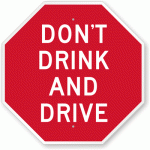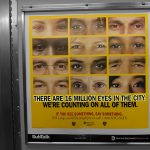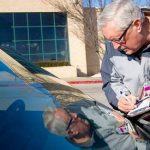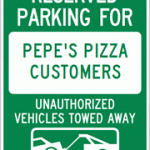Click it or ticket: seat belt laws by state
A seat belt, sometimes also known as a safety belt, is one of the most basic (and effective) safety measures used in passenger vehicles to secure drivers and occupants during frontal collisions or abrupt halts.
![]()
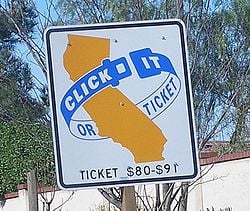 Although seat belts are a long-standing, universal standard, drivers and passengers often neglect to buckle up. According to statistics published by the NHTSA, if 90 per cent of Americans buckled up, over 5000 lives could be saved every year. That would reduce post-crash injuries and deaths by 50 percent.
Although seat belts are a long-standing, universal standard, drivers and passengers often neglect to buckle up. According to statistics published by the NHTSA, if 90 per cent of Americans buckled up, over 5000 lives could be saved every year. That would reduce post-crash injuries and deaths by 50 percent.
Nationwide campaigns like ‘Click it or Ticket’ have proven highly effective in raising awareness about the issue. A gamut of different medias have been employed, like radio, television, buckle up signs, and posters. The campaign has been officially adopted by several states. Signs with state-specific messages help emphasize regional support of this life-saving measure.
![]()
Seat belt laws by state
![]()
Although buckling up has been mandated by law, enforcement varies by state. The US seat belt law infractions are enforced, depending on the state, as either primary or secondary offenses. Primary enforcement permits a police officer to stop and ticket a driver for the seat belt violation, where as secondary enforcement permits an officer to ticket violators only if they are pulled over for another, primary offense (like speeding).
![]()
This report published by the CDC discloses that only 79% of people use seat belts in states with secondary enforcement seat belt laws or no seat belt laws. This increases to 88% in states with primary enforcement.
![]()
Below is a table that shows the type of enforcement, ages, and penalties applied by different states for seat belt violations.
| State | Type of Enforcement | Ages covered under law | Seat applied to | >Base fine |
|---|---|---|---|---|
| Alabama | Primary | Age 15+ | Front | $25 |
| Alaska | Primary | Age 16+ | All | $15 |
| Arizona | Secondary | Age 8+ | All | $10 |
| Arkansas | Primary | Age 15+ | Front | $25 |
| California | Primary | Age 16+ | All | $20 (+142 in penalties and assessments) |
| Colorado | Secondary (Primary for Ages -18) | All front seats | $71 | |
| Connecticut | Primary | Age 7+ | Front | $50 (+$42 fee and surcharge) |
| Delaware | Primary | Age 16+ | All | $25 |
| District of Columbia | Primary | Age 16+ | All | $50 |
| Florida | Primary | Age 6+ | Front (Age 6+); All (Age 6-17) |
$30 |
| Georgia | Primary | Age 8+ | Front (Age 18+); All (Age 8-17) |
$15 |
| Hawaii | Primary | Age 8+ | Front (Age 18+); All (Age 8-17) |
$92 (including administrative fees) |
| Idaho | Secondary | Age 7+ | All | $10 ($51.50 for drivers -18) |
| Illinois | Primary | Age 16+ | Front (+16) All (-18) | $25 |
| Indiana | Primary | Age 16+ | All | $25 |
| Iowa | Primary | All | Front | $25 |
| Kansas | Primary 1 | Age 14+ | Front (Age 18+); All (Age 14-17) |
$10 |
| Kentucky | Primary | Age +7 | All | $25 |
| Louisiana | Primary | Age 13+ | Front | $25 |
| Maine | Primary | Age 18+ | All | $50 |
| Maryland | Primary | Age 16+ | Front | $25 |
| Massachusetts | Secondary | Age 13+ | All | $25 |
| Michigan | Primary | Age 16+ | Front | $25 |
| Minnesota | Primary | 8+ (or +57″) | $25 (+$75 surcharge) | |
| Mississippi | Primary | Age 7+ | Front | $25 |
| Missouri | Secondary (age 8-15 Primary) | 16+ | Front | $10 ($50 primary offense) |
| Montana | Secondary | Age 6+ | All | $20 |
| Nebraska | Secondary | Age 18+ | Front | $25 |
| Nevada | Secondary | Age 6+ | All | $25 |
| New Hampshire | Primary for children only | Age 17 and under | All | $50 |
| New Jersey | Primary 1 | Age 8+ (or +80lbs) | All (secondary for rear seats) | $46 (w/ court costs) |
| New Mexico | Primary | Age 18+ | All | $25 |
| New York | Primary | All (-16 rear seats) | Front | $50 |
| North Carolina | Primary (secondary in rear seats) | Age 16+ | All | $25 (+$135.50 court costs) |
| North Dakota | Secondary | Age 18+ | Front | $20 (actual $100.50) |
| Ohio | Secondary | Age 8+ | Front (Age 15+); All (Age 8-14) |
$30 ($20 for passengers) |
| Oklahoma | Primary | Age 13+ | Front | $20 |
| Oregon | Primary | Age 8+ (or +4’9″) | All | $110 |
| Pennsylvania | Primary (8-17) Secondary (18+) | Age 8+ | Front (18+) All (8-17) | $10 |
| Rhode Island | Primary | Age 13+ | All | $85 |
| South Carolina | Primary | Age 6+ | All | $25 |
| South Dakota | Secondary | Age 18+ | Front | $25 |
| Tennessee | Primary | Age 16+ | Front | $50 |
| Texas | Primary | Age 15+ or (-7) | All | $50 (15+ driver or passenger) $200 (-7, driver) |
| Utah | Secondary (primary -19) | Age 16+ | All | $45 |
| Vermont | Secondary (primary -18) | Age 18+ | All | $25 |
| Virginia | Secondary (primary for passengers -18) | All drivers, passengers 18+ | Front | $25 |
| Washington | Primary | Age 16+ | All | $124 |
| West Virginia | Secondary | Age 8+ | Front (Age 8+); All (Age 8-17) |
$25 |
| Wisconsin | Primary | Age 8+ | All | $10 |
| Wyoming | Secondary | Age 9+ | All | $25 ($10 passengers) |
Seat belt crashes and facts![]()
Data for the year 2009, published by NHTSA, reveals that unbuckled passengers and drivers accounted for 12,432 fatalities.
![]()
Reports by the Centers for Disease Control and Prevention (2010) reveal that people in the 18 to 34 age range are far more likely to refrain from wearing safety belts, as compared to people over 35. Women are 10% more likely to wear seat belts than men.
![]()
Seat belt usage
![]()
Data published by NHTSA using the National Occupant Protection Use Survey (NOPUS) reveals that seat belt use increased to 85% in 2010 as compared to 84% in 2009. The highest use of seat belts was seen in the Western part of the US where 95% people used restraints. The percentage of seat belt use remained constant in states with primary enforcement laws at 88%, whereas states with secondary enforcement laws saw a decrease from 77% in 2009 to 76% in 2010.
![]()
Data reveals certain patterns in seat belt usage across different states. The Northeast and Midwest part of the country saw no change and remained at 81% and 82% respectively, in both 2009 and 2010. Increase in the use was seen in North and South with an increase from 82% to 84% (2009-2010) and 93% to 95% (2009-2010) respectively.
![]()
How can you help increase seat belt use?
![]()
Promoting seat belt use can save lives. Here’s how you can do your part.
![]()
- Be especially mindful of putting on seat belts in front of children.
- Make sure children under the age of 12 are seated in the back–in the middle whenever possible.
- Place kids in child safety seats that are properly adjusted and attached to the seat.
- Ask your family to buckle up even if they are at the back seat.
- Use seat belts while going out with colleagues and friends. Encourage them to do so too.
- Help promote the issue by using buckle up bumper stickers, signs, and labels.
- Help the local authorities and police department in their safety belt awareness campaign.
- Advocate primary enforcement in your state.
Seat belt signs actually help!
![]()
A study found that nine out of ten people will buckle up when asked. The CDC states that enhanced enforcement increases seat belt use by a median of 16 percentage points. Visual and verbal support is effective – like the ‘click it or ticket’ campaign.
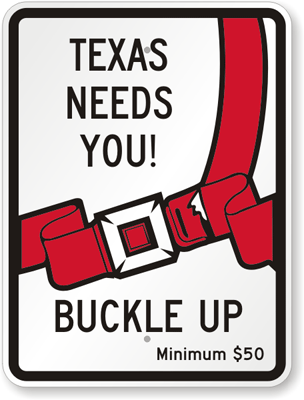
View this sign here.
Related Posts
Category: Regulations













